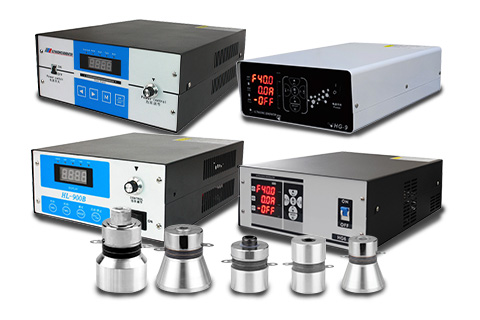What Is an Ultrasonic Cleaner? The Science Behind Industrial-Grade Precision Cleaning
In modern manufacturing ecosystems where micron-level cleanliness determines product quality, ultrasonic cleaning systems have emerged as the cornerstone of contamination control. This in-depth guide explores the operational principles, technological advancements, and strategic selection criteria for industrial ultrasonic cleaning equipment, providing actionable insights for businesses seeking to optimize their cleaning workflows.
1. Core Operating Principles of Ultrasonic Cleaning Technology
At its essence, an industrial ultrasonic cleaner operates through high-frequency sound wave propagation (typically 20-150 kHz) within a liquid medium. The process initiates when piezoelectric transducers convert electrical energy into mechanical vibrations7. These vibrations create alternating high-pressure and low-pressure cycles in the cleaning solution, generating microscopic vacuum bubbles through cavitation phenomena.
The real cleaning power manifests during bubble implosion – when these micro cavities collapse, they release concentrated energy streams exceeding 10,000 psi, effectively disintegrating contaminants ranging from industrial lubricants to submicron particulate matter. Advanced systems employ multi-frequency modulation to adapt bubble size distribution, enabling simultaneous macro-scale degreasing and micro-surface polishing in a single operation cycle.
2. Critical Components of Industrial Cleaning Systems
A professional ultrasonic cleaning station comprises three synergistic subsystems:
- Power Generation Module: The ultrasonic generator serves as the system’s brain, precisely controlling frequency output (±0.5% stability) and power density (typically 5-50 W/gal). Modern digital controllers incorporate adaptive algorithms to maintain cavitation efficiency across varying load conditions.
- Energy Conversion Array: High-durability piezoelectric transducers, often arranged in phased arrays, ensure uniform energy distribution across the tank. Premium systems utilize military-grade PZT ceramics with >100,000-hour operational lifespan under continuous duty cycles.
- Process Optimization Features: Temperature-controlled stainless steel tanks (304/316L grade), programmable degas cycles, and automated filtration systems collectively enhance process repeatability, particularly critical for aerospace and medical device applications.
3. Strategic Applications Across Industries
Ultrasonic technology’s non-abrasive nature makes it indispensable for cleaning-sensitive components:
- Medical Instrument Reprocessing: Achieves ISO 17665-compliant sterilization for surgical tools, effectively removing biological residues in endoscopic channels without compromising structural integrity.
- Electronics Manufacturing: Removes flux residues from PCB assemblies using low-frequency agitation (40 kHz), followed by high-frequency rinsing (120 kHz) to prevent dendrite formation.
- Precision Engineering: Cleans injection molding tools with complex geometries, reaching internal channels below 50μm diameter that traditional methods cannot access.
- Sustainable Maintenance Practices: Reduces solvent consumption by 70% compared to spray washing systems, aligning with REACH and EPA wastewater regulations.
4. Technical Advantages Over Conventional Methods
Industrial ultrasonic systems outperform manual/mechanical cleaning in three critical dimensions:
- Cleaning Precision: Achieves 98.7% contaminant removal efficiency for particles down to 0.2μm, verified through SEM-EDS analysis.
- Process Efficiency: Reduces cleaning cycle times by 85% for batch processing of engine components compared to immersion techniques.
- Operational Safety: Eliminates worker exposure to hazardous solvents through closed-system operation with integrated vapor recovery.
5. Selection Guidelines for Industrial Buyers
When evaluating ultrasonic cleaning systems, prioritize these technical specifications:
- Frequency Spectrum: 25-28 kHz for heavy grease removal in automotive parts; 68-120 kHz range for optical lens cleaning
- Energy Density: Minimum 15 W/gal for industrial applications, scalable to 30 W/gal for high-viscosity contaminants
- Material Compatibility: Passivation-treated 316L stainless steel tanks for acidic cleaning chemistries
- Compliance Certifications: CE Mark for electrical safety, ISO 9001 for quality management systems
6. Maintenance Protocol for Peak Performance
Implement these best practices to maximize equipment ROI:
- Conduct monthly impedance tests on transducer arrays to detect piezoelectric degradation
- Replace filtration membranes every 500 operational hours when processing abrasive contaminants
- Perform annual recalibration of frequency generators using laser vibrometry equipment
- Utilize reverse osmosis water to prevent mineral scale accumulation in heating elements
Next-Generation Cleaning Solutions for Industry 4.0
Modern ultrasonic systems now integrate IoT-enabled process monitoring, with sensors tracking cavitation intensity in real-time and adjusting parameters via machine learning algorithms. This technological evolution positions ultrasonic cleaning as a critical enabler for smart factory initiatives, particularly in semiconductor fabrication and renewable energy component manufacturing
